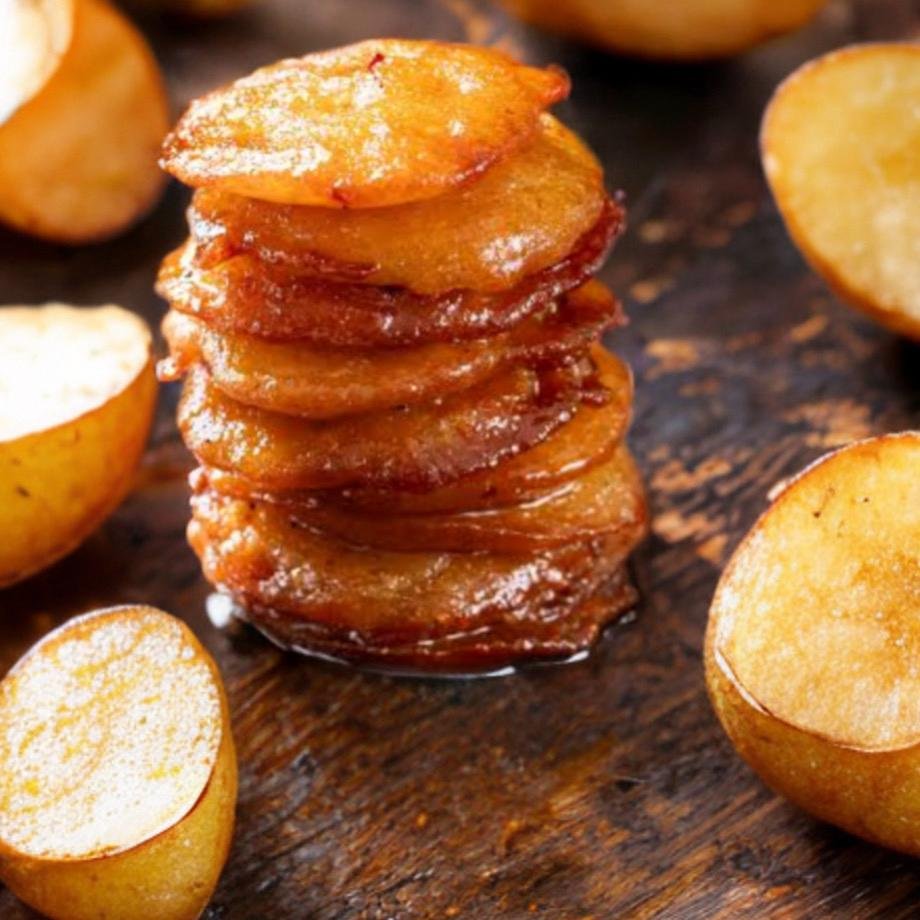
Preparation:
- Mixing the Ingredients:
- Begin by mashing the ripe bananas, if using. Combine the mashed bananas with wheat flour and sugar or jaggery in a large bowl.
- Gradually add water or milk to form a thick, smooth batter, similar to pancake batter. For enhanced flavor, add a pinch of cardamom powder.
- Resting the Batter:
- Allow the batter to rest for 15-20 minutes, which helps soften the wheat flour and blend the flavors.
- Frying the Puva:
- Heat ghee or oil in a deep pan over medium heat. Once hot, drop spoonfuls of batter into the oil.
- Fry until the Puva is golden brown on both sides, ensuring an even, crisp exterior and a soft, fluffy interior.
- Serving:
- Drain the Puva on paper towels to remove excess oil. Serve warm, garnished with raisins and chopped nuts if desired.
The Role of Bananas
The addition of bananas is a popular variation that adds natural sweetness and a moist, tender texture to Puva. This variation is especially favored in regions where bananas are abundant and commonly used in traditional recipes.
Puva in Modern Times
Despite evolving culinary trends, Puva remains a cherished dish in Mithila and Bihar, especially during Holi and Chhath Puja. The preparation of Puva often brings together generations, with recipes and techniques passed down through the family. Modern adaptations may include ingredients like coconut, dry fruits, and even chocolate, but the traditional wheat flour and sugar base ensures that the essence of Puva endures.
Conclusion
Puva is more than just a sweet treat; it is a culinary symbol of the rich heritage of Mithila and Bihar. Whether made traditionally or with modern twists, Puva continues to be a beloved dish that brings families together during festivals, reminding us of the sweetness of tradition and the enduring bonds that connect generations.
Puva: A Sweet Tradition from Mithila and Bihar
Puva, a beloved traditional sweet dish, is deeply woven into the cultural fabric of Mithila and Bihar. Particularly during the vibrant festivals of Holi and Chhath Puja, Puva holds a special place as a symbol of joy, devotion, and togetherness. This time-honored delicacy, rich in history and tradition, represents not only the region’s agricultural abundance but also the warmth and unity of its people. Over the years, variations such as the addition of ripe bananas have enhanced its flavor and texture, making Puva even more cherished across generations.
Historical Roots
The origins of Puva date back to ancient times when Mithila was a thriving center of culture and learning. Known for its fertile lands, this region has long been celebrated for its agricultural wealth, with wheat and rice as staple crops. Puva, made primarily from wheat flour, reflects this agricultural bounty. Initially a simple dish of wheat flour, water, and sugar, Puva has evolved over time, with ingredients like bananas being added to create a richer, more nutritious version that delights the palate.
Cultural Significance
Puva is more than just a dessert; it is a vital part of the cultural identity of Mithila and Bihar. During Holi, Puva is prepared in large quantities and shared among family, friends, and neighbors, embodying the sweetness of relationships and the joy of the festival. In Chhath Puja, a deeply spiritual festival dedicated to the Sun God, Puva is offered as prasad (a religious offering), symbolizing humility, devotion, and the purity of the festival.
Ingredients:
- 2 cups of wheat flour
- 1 cup of sugar or jaggery (gur)
- 2-3 ripe bananas (optional)
- A pinch of cardamom powder
- A handful of raisins and chopped nuts (optional)
- Water or milk, as needed
- Ghee or oil for frying

